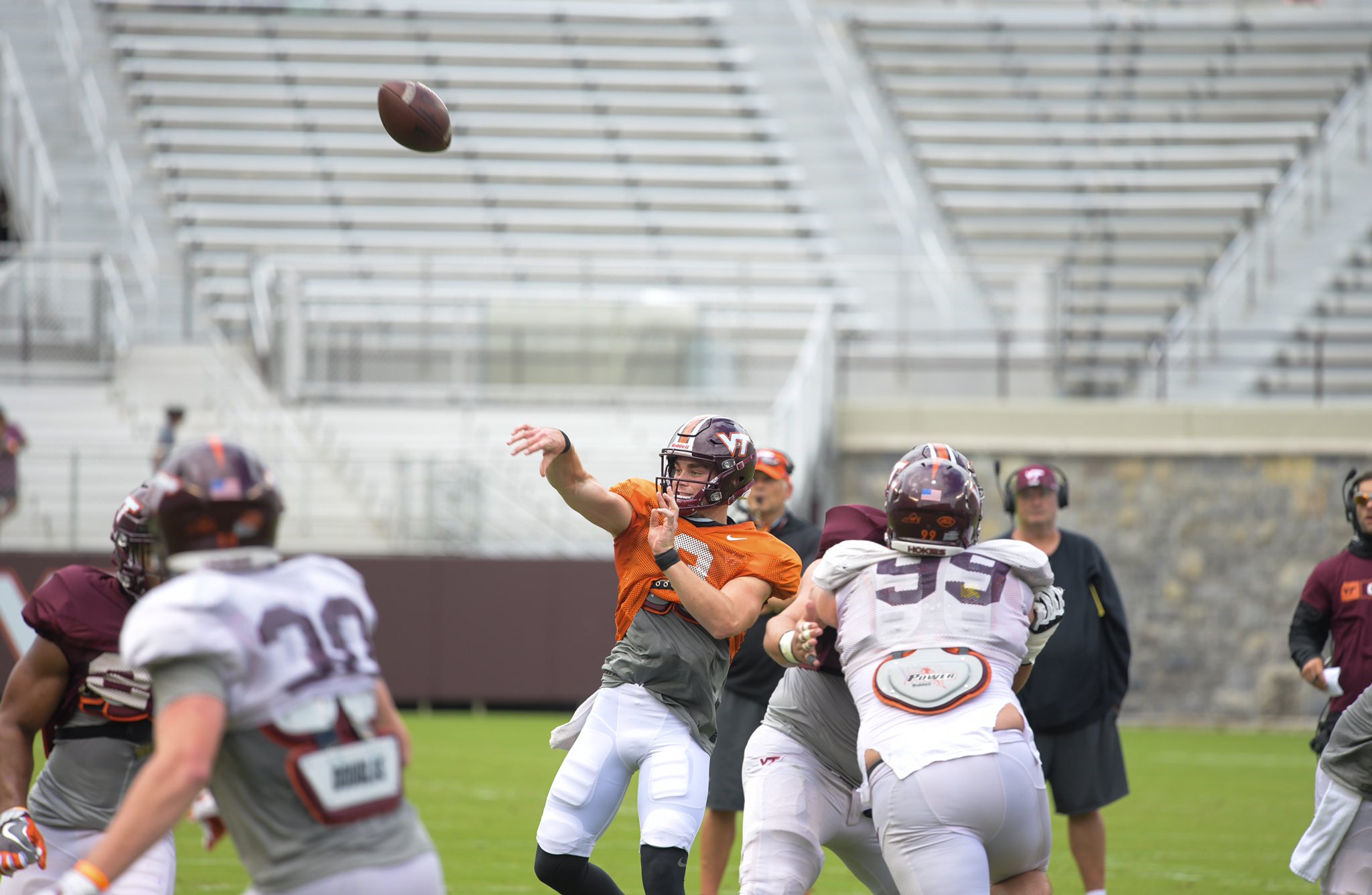
TSL staff and insiders have told us that Braxton Burmeister might’ve been the Hokies’ best quarterback last year. Praise was doled out for a player whose accuracy, speed, and aggression made him a scout-team thorn in the defense’s side. This year we’re hearing more of the same as he challenges for a starting gig.
Burmeister is at Tech now because he was thrown into the grinder during Willie Taggart’s one-year stand with Oregon. Hometown golden boy and future first-round QB Justin Herbert went down with a broken collarbone and his backup got a concussion against Cal, leaving Burmeister as the next man up. Burmeister was a coveted Parade All-American who had been studying film with his father (a former pro DB) since he was eight, who had been tutored by former Howard head coach Steve Wilson and former San Francisco 49er Jeff Garcia, and who had former Oregon great Akili Smith as a mentor. The physical tools were there, too. He was timed in high school in the 4.6-4.7 range on the 40-yard dash, chucked a pretty deep ball, had nice touch, and hit targets on the sprint-out. Oregon was his dream school, and after his commitment fans were talking of Heismans and national titles.
Burmeister was still a raw true freshman, though. The Ducks were 4-1 following the Cal game, but after five starts by Burmeister, their record had fallen to 5-5. I watched all five of his starts, and I can tell you a few strengths of his. I can also tell you that if he’s challenging for the starting role now, then a lot of the problems he had have been either fixed or sanded down to acceptable levels.
His first start, a 33-10 loss to #11 Washington State, began well, with the Ducks leading 10-7 in the first quarter. Burmeister seemed to show a good understanding of how to run the Zone Read, which was the Ducks’ favorite play. Critiquing reads on the basic Zone Read can be tricky because coaches vary in how much they want the QB to carry the ball. Some want the QB to carry it if the read man makes any hint of going inside, while others want the QB to hand it off unless they’re 100% sure the back’s going to get gang-tackled for a five-yard loss. With that caveat said, Burmeister had a grip on the basics of reading the end-man, and when he kept he was a solid runner:
...Subscribe to read full story
Tired of low effort articles and clickbait? So are we. Subscribe to read great articles written by a full-time staff with decades of experience.
Already a subscriber? Login Here



